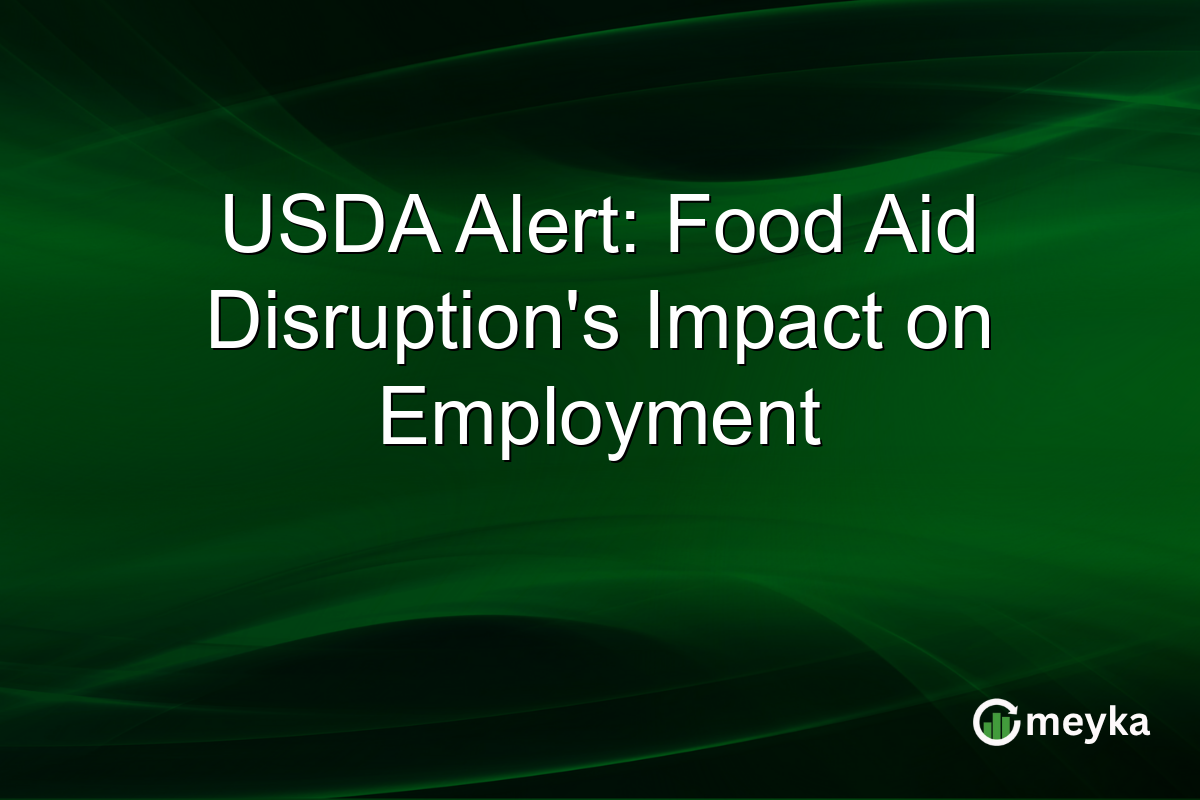USDA Alert: Food Aid Disruption’s Impact on Employment
In recent news, the USDA has declared a significant disruption in federal food aid, starting November 1st. The cessation arises from the depletion of unfunded contingency reserves. This SNAP benefits halt may ripple across the economy, particularly affecting federal workers who might scramble for alternative income sources. Such a series of events underlines a potential rise in economic hardship for many Americans.
Understanding the USDA Food Aid Disruption
The USDA, responsible for the Supplemental Nutrition Assistance Program (SNAP), has announced a halt in food aid come November. This disruption stems from budget limitations and lacks contingency funds. Recent reports indicate that around 43 million Americans who rely on SNAP benefits will face uncertainty.
This anticipated cessation not only affects the beneficiaries but also raises concerns about the broader economic implications. Many households depend on these benefits to meet their basic dietary needs, suggesting an imminent strain on personal savings and expenses. Further details are highlighted on CBS News.
Impact on Federal Workers and Employment
The halt in food aid directly impacts federal workers, especially those who manage SNAP operations. Without adequate funding, many government employees may face furloughs or even job losses. Past government shutdowns have shown that these disruptions can lead to increased unemployment claims.
This situation poses a challenge not only to employment but also to overall economic stability. As workers seek alternative employment, the job market could see shifts. This reaction is pivotal as families seek secure finances amidst the disruption. For more insights, visit Inquirer.
Economic Repercussions and Future Implications
No government shutdown occurs in isolation. The SNAP benefits halt exacerbates pressures on other economic sectors. Small businesses, particularly those in the retail and food sectors, may experience reduced consumer spending.
Moreover, the social impact of this disruption cannot be ignored. Increased reliance on food banks and charity organizations will likely follow, reflecting broader economic strain. As federal aid wanes, exploring robust financial solutions and policy interventions becomes critical.
View more discussions on X.
Final Thoughts
The USDA’s announcement about the impending SNAP benefits halt signals a pressing challenge for federal workers and the broader economy. As we look ahead, families relying on this assistance will need to navigate difficult choices, potentially opting for alternate income sources. Federal policies will be under scrutiny as lawmakers seek solutions to mitigate economic fallout.
Investors and economic analysts should observe these developments closely. Understanding these shifts is vital for predicting market trends and planning financial portfolios. Platforms like Meyka offer real-time insights and analytics, aiding informed decision-making in such uncertain times.
FAQs
The USDA food aid disruption is due to unfunded contingency reserves, resulting in a SNAP benefits halt beginning November 1st. This financial strain arises from limited budgetary allocations.
The disruption could impact federal workers, potentially leading to furloughs or job losses, as government operations tied to SNAP benefits stall. Broader unemployment claims might also rise.
The SNAP benefits halt could lead to decreased consumer spending, impacting small businesses and retail food sectors. Economic strain may increase reliance on food banks and charitable organizations.
Disclaimer:
This is for information only, not financial advice. Always do your research.






